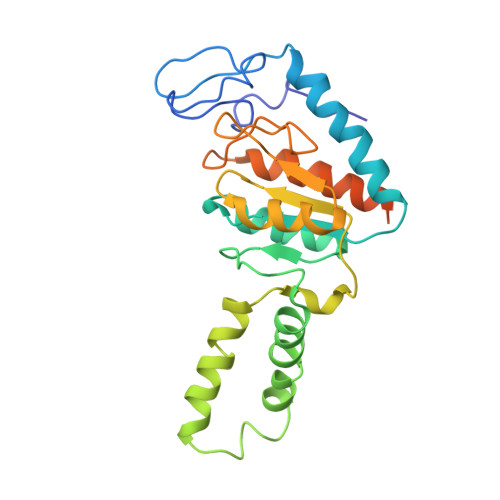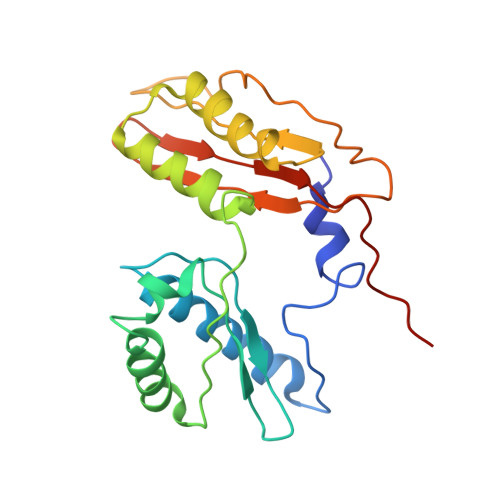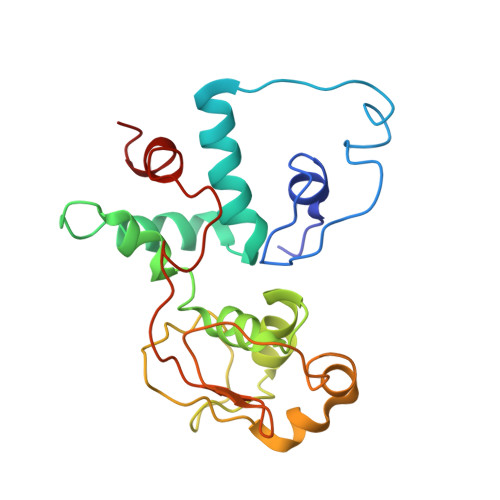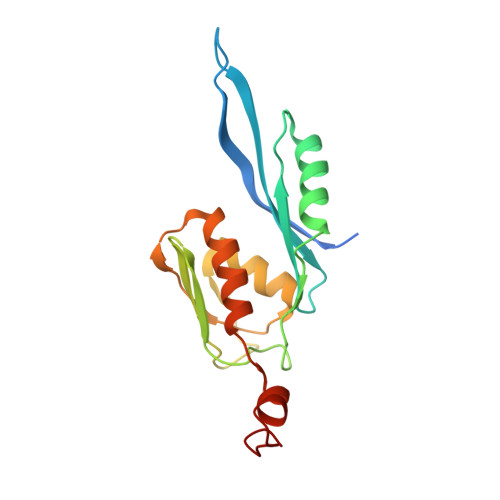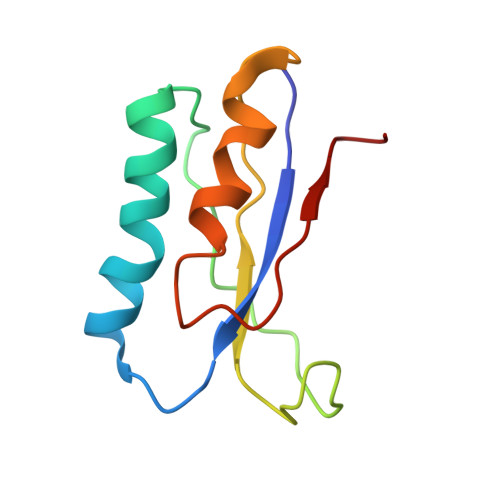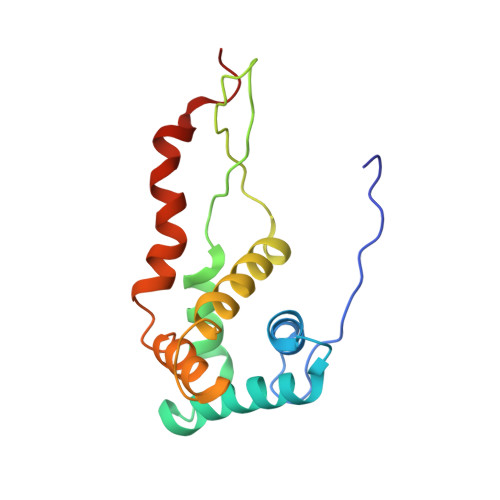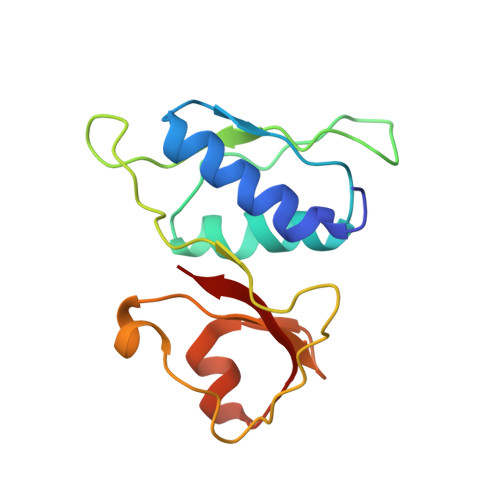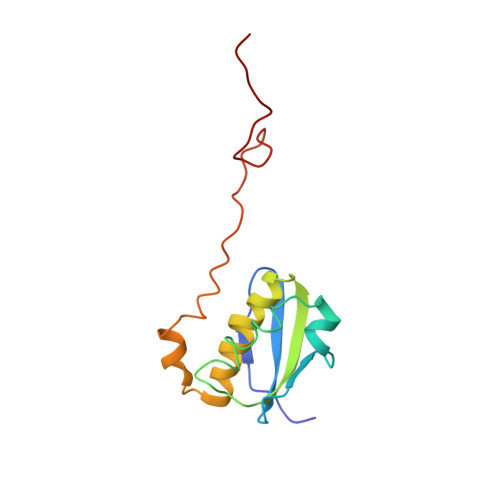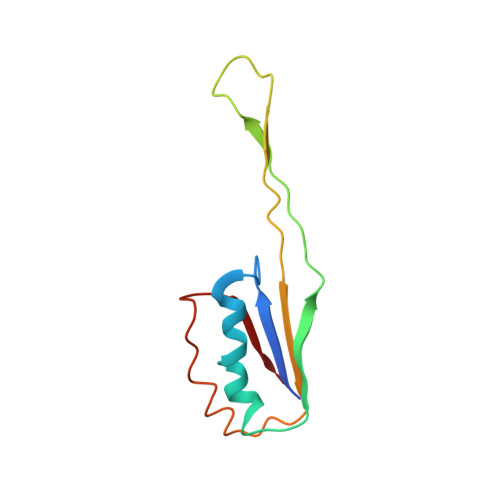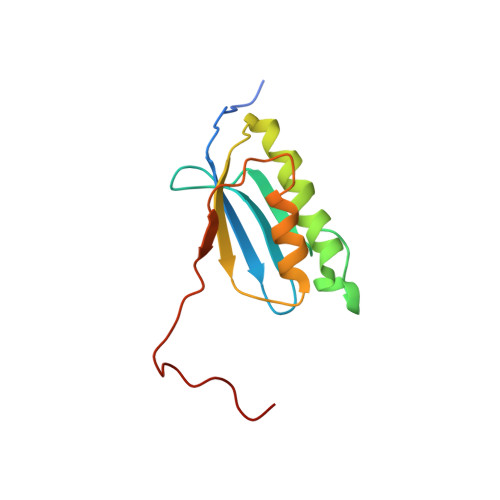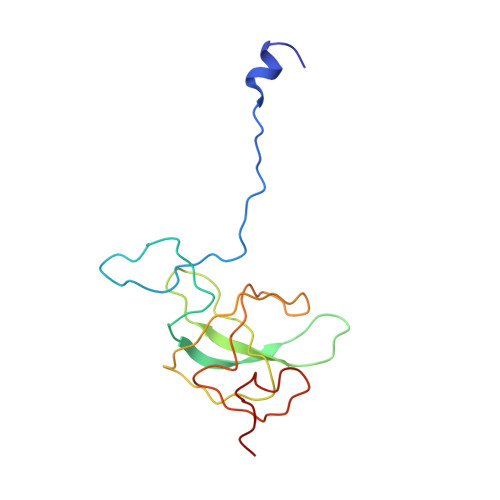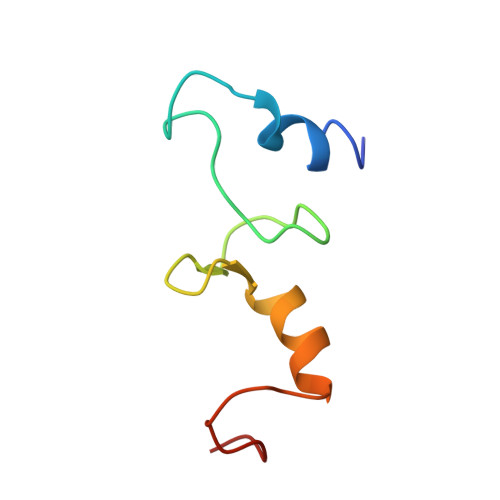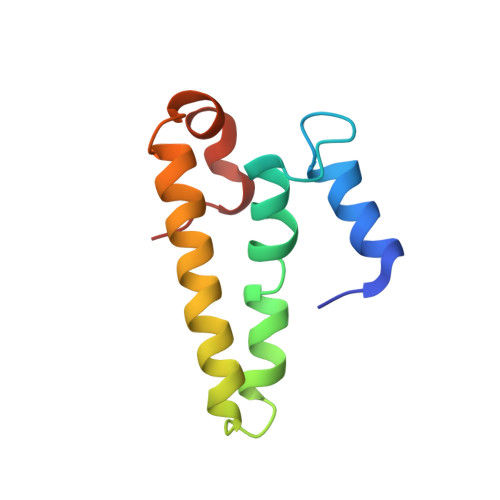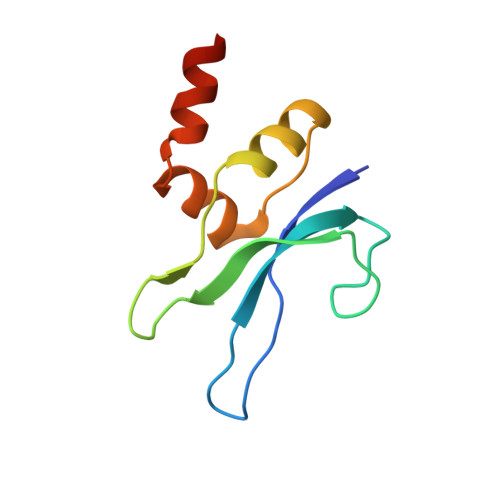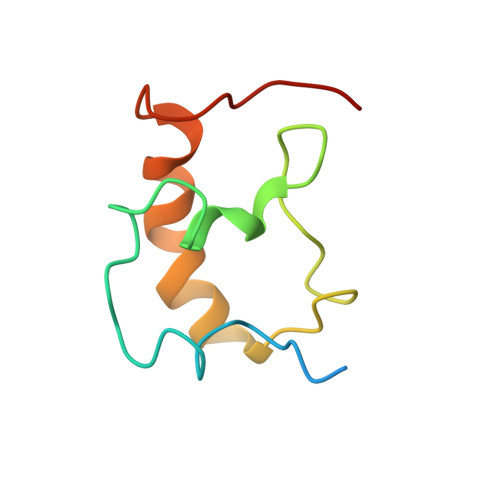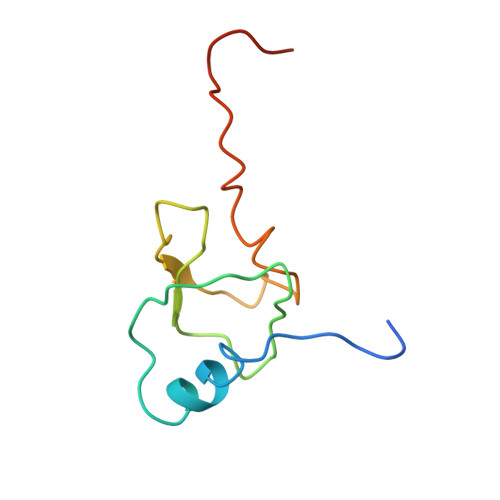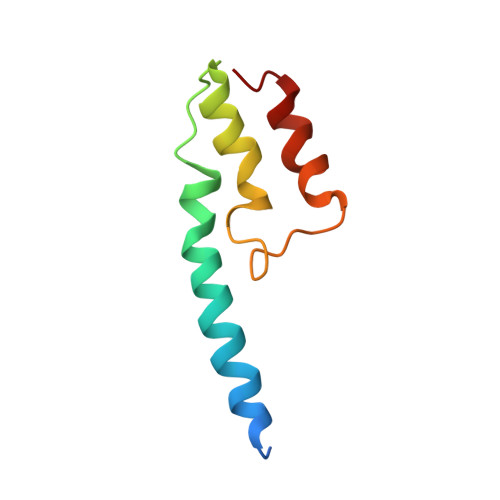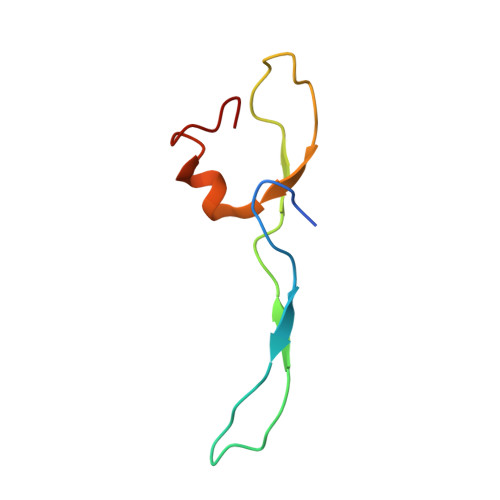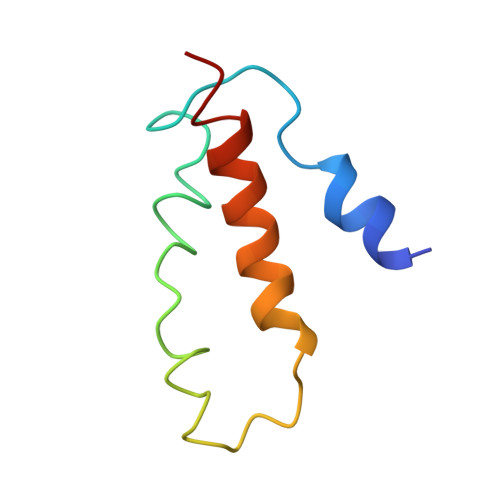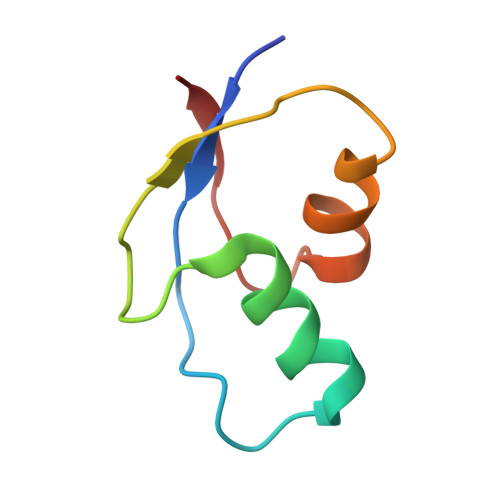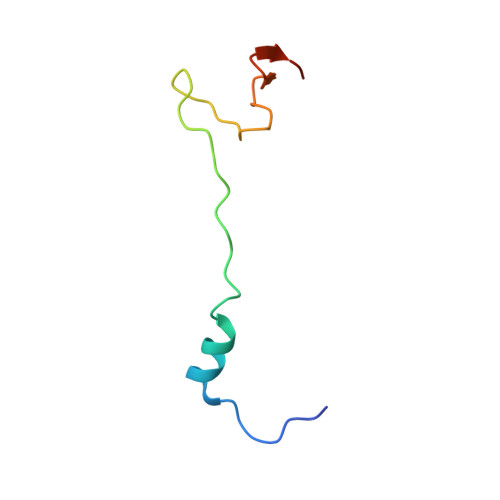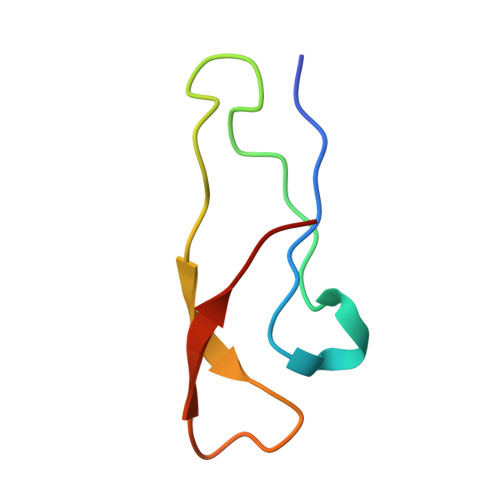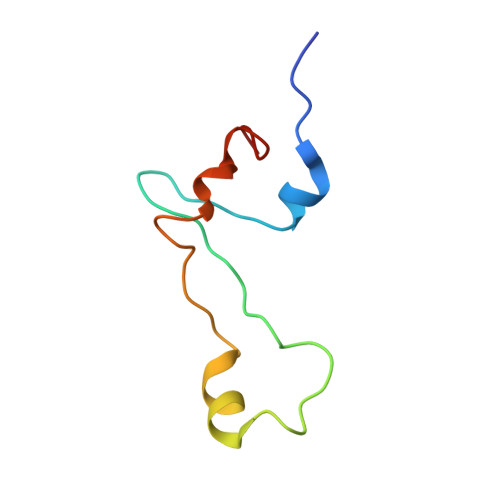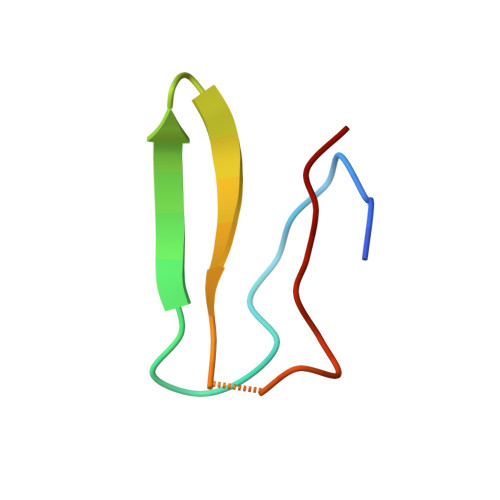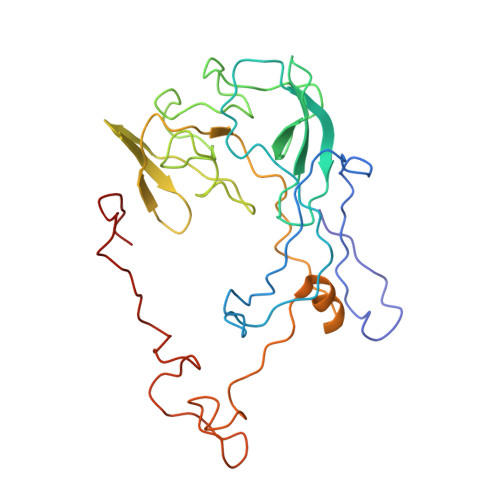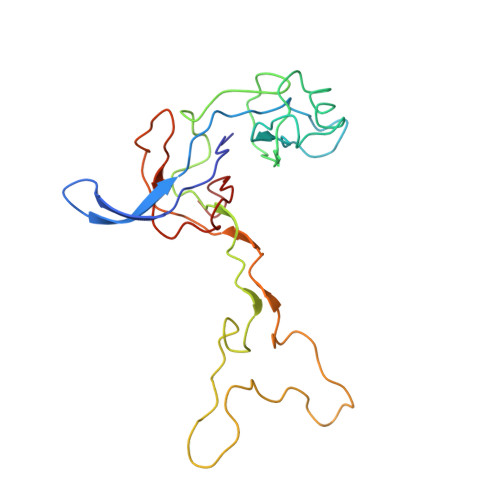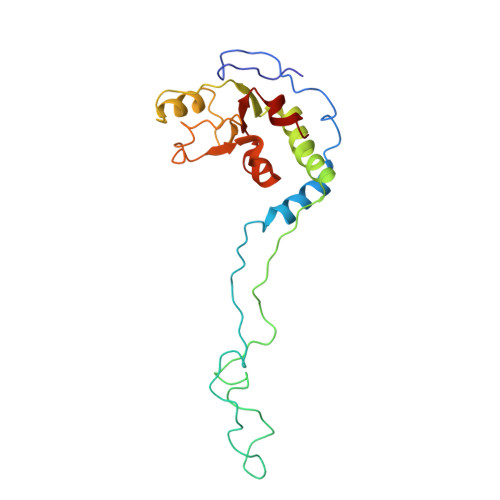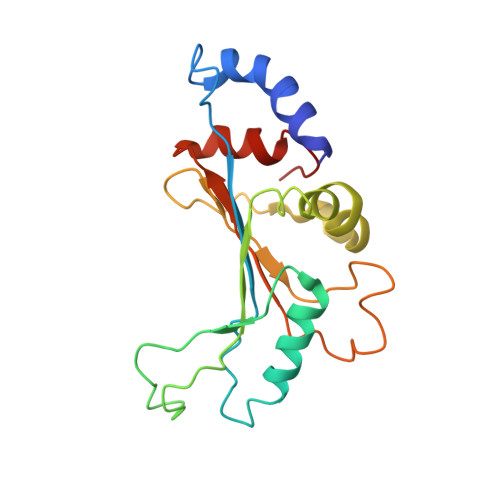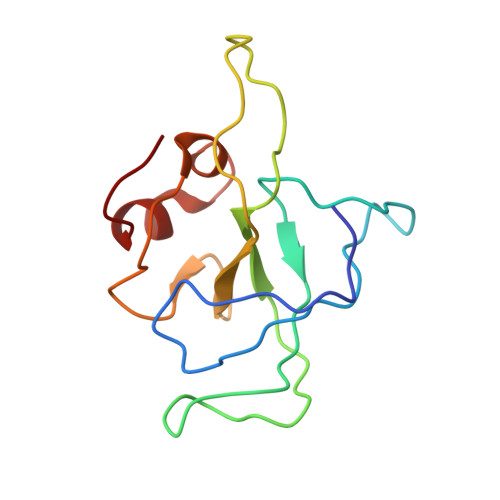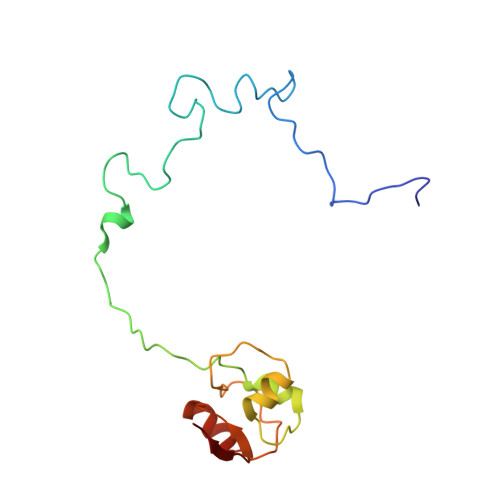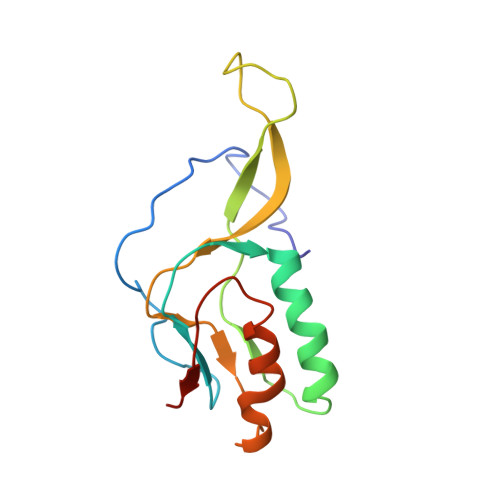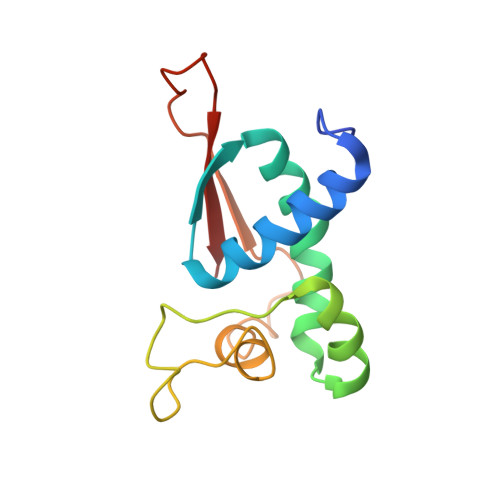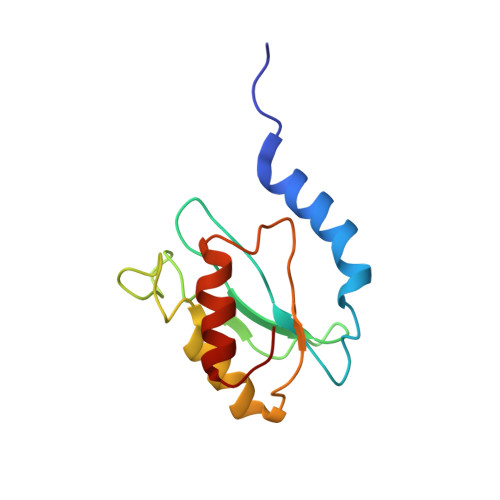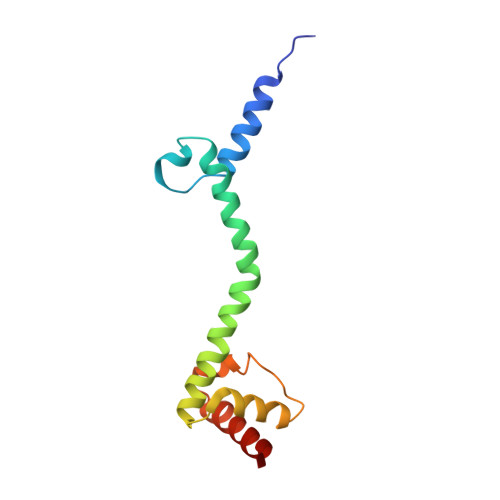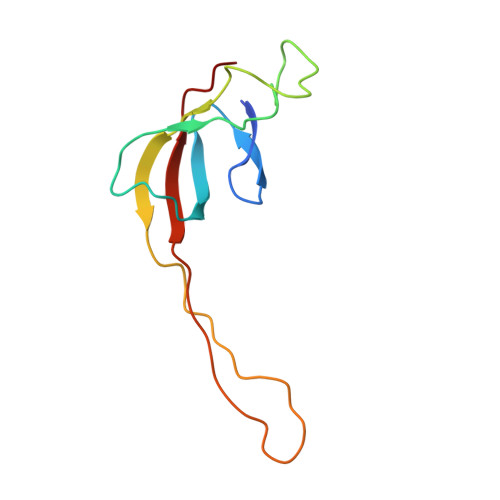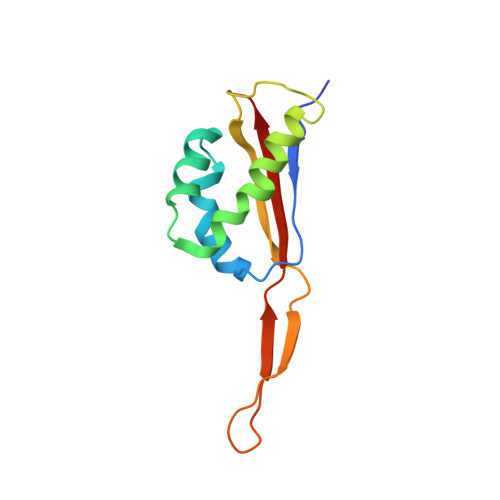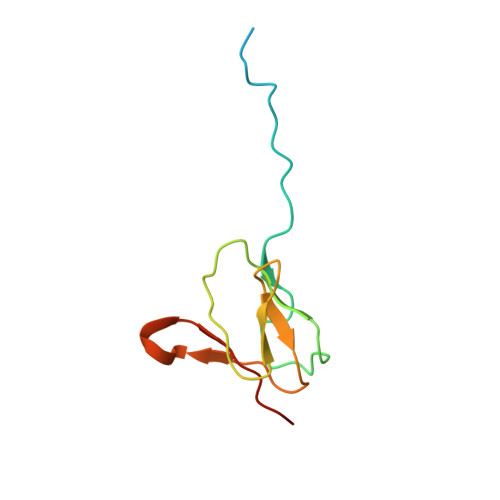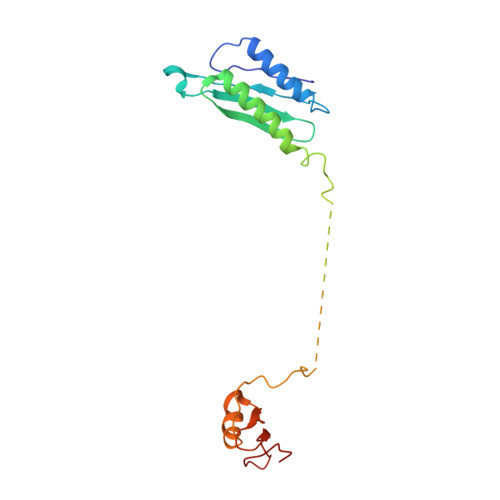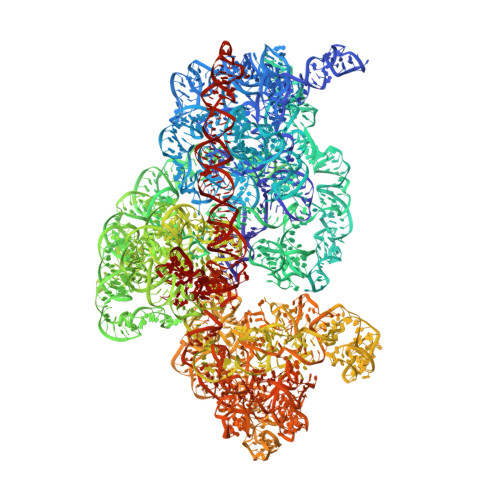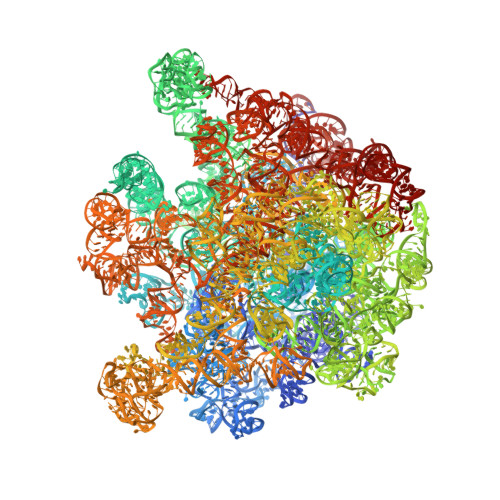A general mechanism of ribosome dimerization revealed by single-particle cryo-electron microscopy.
Franken, L.E., Oostergetel, G.T., Pijning, T., Puri, P., Arkhipova, V., Boekema, E.J., Poolman, B., Guskov, A.(2017) Nat Commun 8: 722-722
- PubMed: 28959045
- DOI: https://doi.org/10.1038/s41467-017-00718-x
- Primary Citation of Related Structures:
5MYJ - PubMed Abstract:
Bacteria downregulate their ribosomal activity through dimerization of 70S ribosomes, yielding inactive 100S complexes. In Escherichia coli, dimerization is mediated by the hibernation promotion factor (HPF) and ribosome modulation factor. Here we report the cryo-electron microscopy study on 100S ribosomes from Lactococcus lactis and a dimerization mechanism involving a single protein: HPF long . The N-terminal domain of HPF long binds at the same site as HPF in Escherichia coli 100S ribosomes. Contrary to ribosome modulation factor, the C-terminal domain of HPF long binds exactly at the dimer interface. Furthermore, ribosomes from Lactococcus lactis do not undergo conformational changes in the 30S head domains upon binding of HPF long , and the Shine-Dalgarno sequence and mRNA entrance tunnel remain accessible. Ribosome activity is blocked by HPF long due to the inhibition of mRNA recognition by the platform binding center. Phylogenetic analysis of HPF proteins suggests that HPF long -mediated dimerization is a widespread mechanism of ribosome hibernation in bacteria.When bacteria enter the stationary growth phase, protein translation is suppressed via the dimerization of 70S ribosomes into inactive complexes. Here the authors provide a structural basis for how the dual domain hibernation promotion factor promotes ribosome dimerization and hibernation in bacteria.
Organizational Affiliation:
Department of Biophysical Chemistry, Groningen Biomolecular Sciences and Biotechnology Institute, University of Groningen, Nijenborgh 7, 9747 AG, Groningen, The Netherlands.








